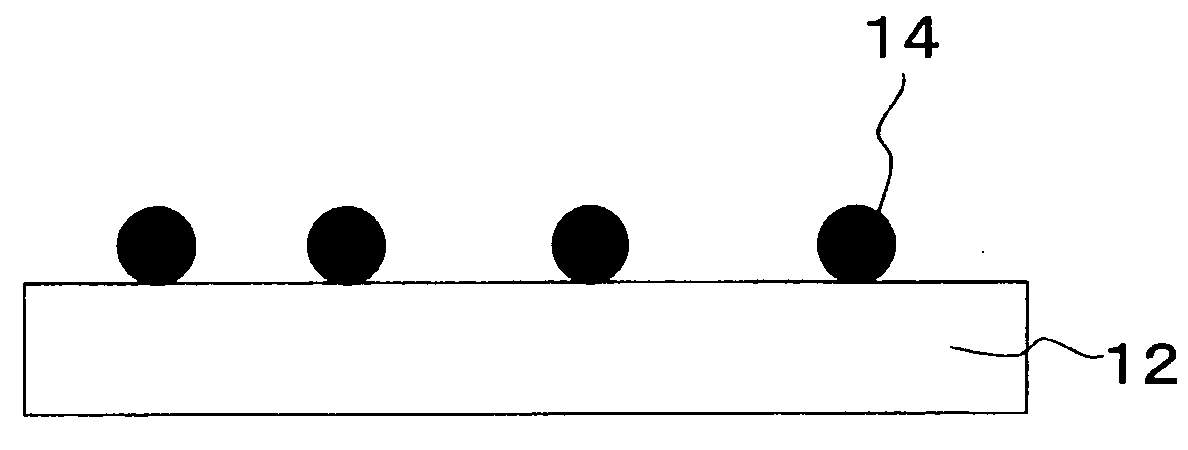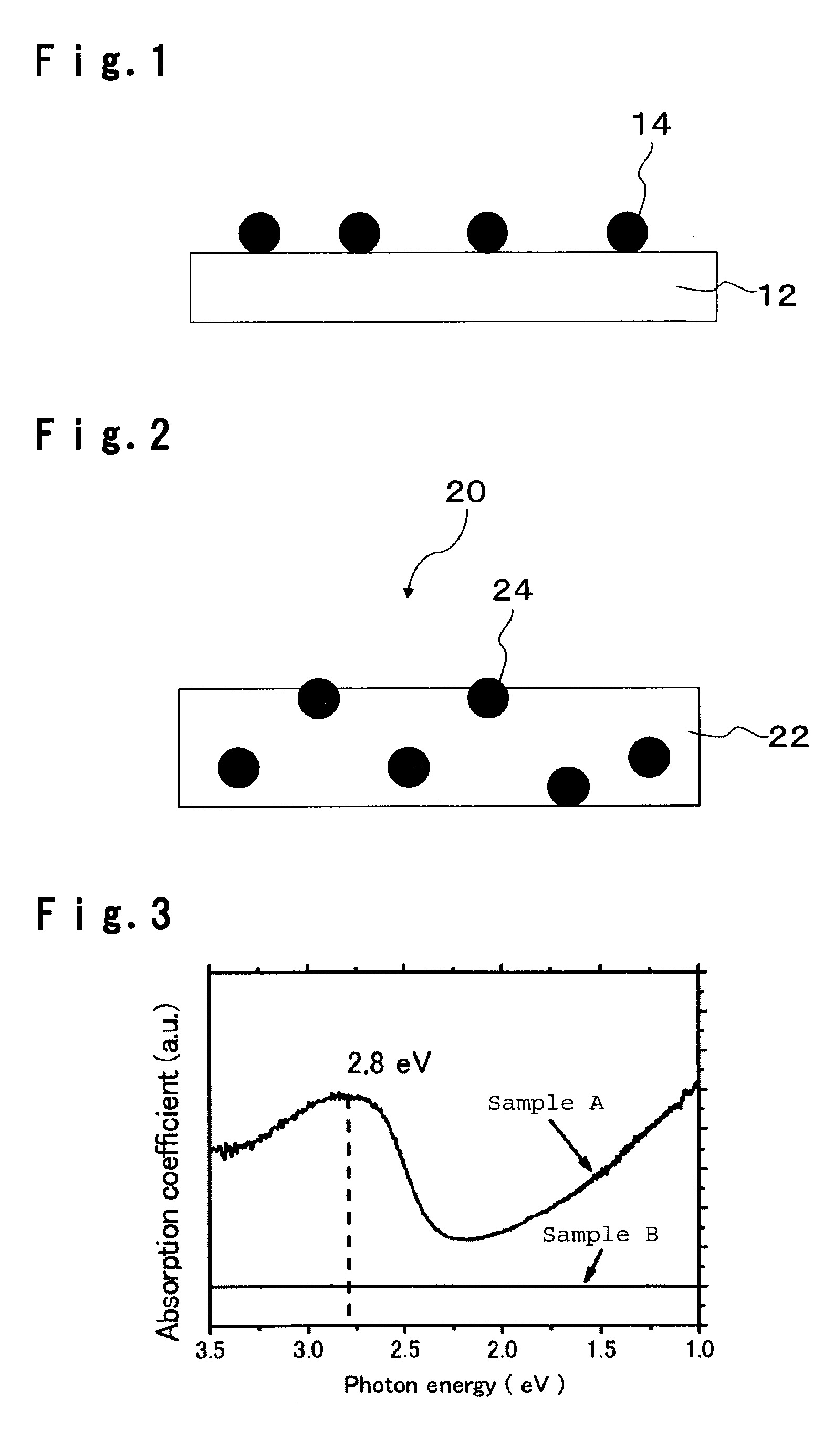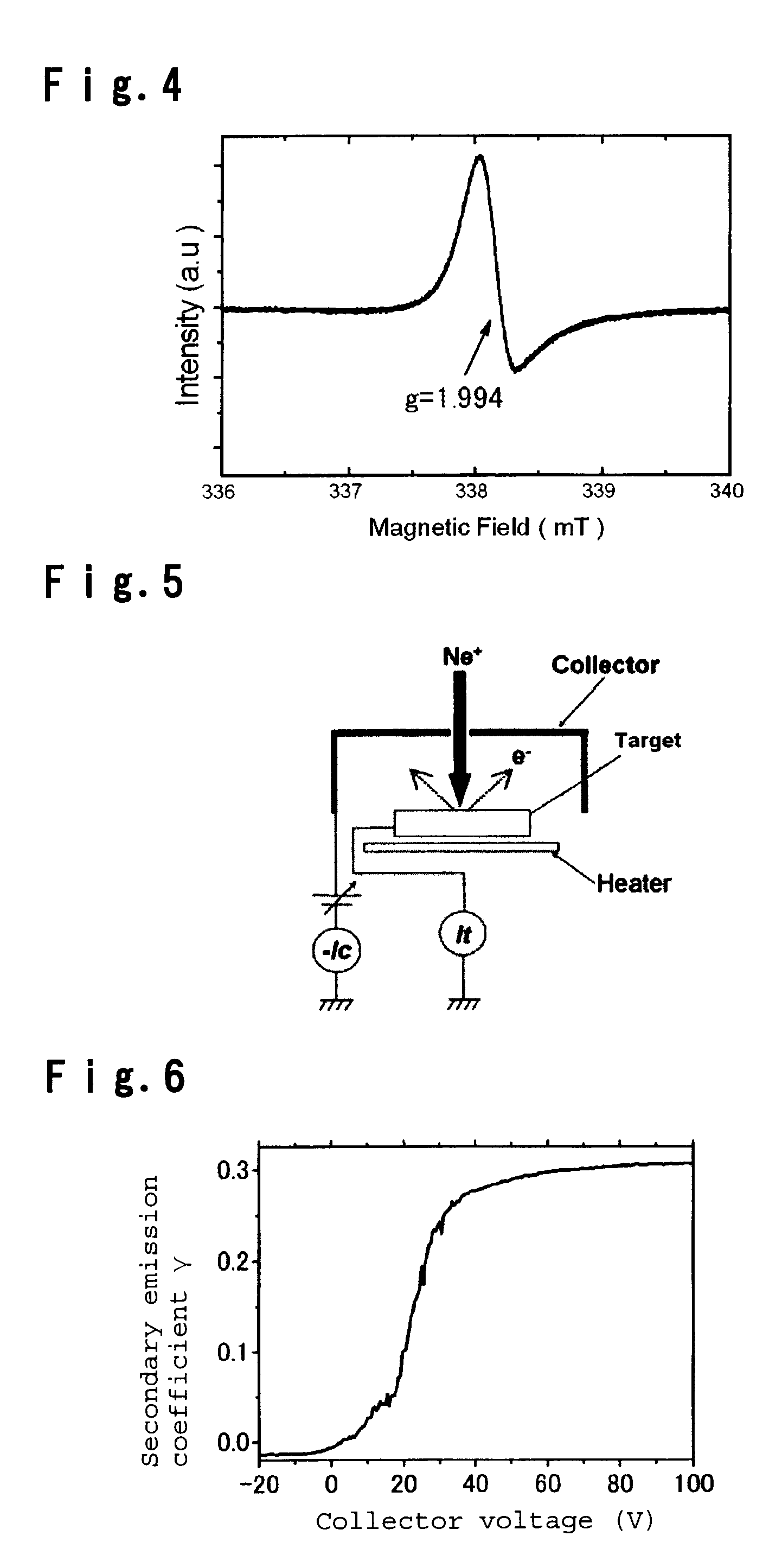Plasma display panel and its production process
a technology of plasma and display panel, which is applied in the manufacture of electrode systems, cold cathode manufacturing, electric discharge tube/lamp manufacture, etc., can solve the problems of difficult to obtain a pdp having favorable properties and insufficient secondary electron discharge of films, and achieve favorable discharge properties, high ultraviolet luminous efficiency, and high discharge efficiency
- Summary
- Abstract
- Description
- Claims
- Application Information
AI Technical Summary
Benefits of technology
Problems solved by technology
Method used
Image
Examples
example 1
[0083]Calcium carbonate and aluminum oxide were mixed in a molar ratio of 12:7 and held in the air at 1,300° C. for 6 hours to prepare a 12CaO.7Al2O3 compound (hereinafter referred to as a C12A7 compound). The powder was formed into a molded product by a uniaxial pressing machine, and the molded product was held in the air at 1,350° C. for 3 hours to prepare a sintered product having a sintered density exceeding 99%. This sintered product was a white insulant showing no electrical conductivity (hereinafter referred to as sample B).
[0084]The sintered product together with metal aluminum was put in an alumina container with a lid and heated to 1,300° C. in a vacuum furnace and held for 10 hours and then slowly cooled to room temperature. The obtained heat treated product was black brown and confirmed to have a peak of a Mayenite structure as measured by X-ray diffraction. Further, it was found from a light absorption spectrum as measured by U3500 manufactured by Hitachi, Ltd. that it ...
example 2
[0087]A bulk prepared in the same manner as in preparation of sample A in Example 1, was crushed in a mortar to prepare a powder (hereinafter referred to as powder A). The particle size distribution of powder A was measured by means of laser diffraction scattering method using SALD2100 manufactured by Shimadzu Corporation and as a result, the average particle size was 5 μm. Powder A was supported on an electrically conductive tape, and measurement was carried out in the same manner as in Example 1 without carrying out annealing treatment and as a result, the secondary emission coefficient γ was 0.22.
example 3
[0088]Calcium carbonate and aluminum oxide were mixed in a molar ratio of 12:7 and held in the air at 1,300° C. for 6 hours to prepare a C12A7 compound. The powder was formed into a molded product by a uniaxial pressing machine, and the molded product was held in the air at 1,350° C. for 3 hours to prepare a sintered product having a sintered density exceeding 99%. The sintered product was a white insulant showing no electrical conductivity. The sintered product was put in a carbon crucible with a lid, put in a tubular furnace through which nitrogen flowed, held at 1,300° C. for 3 hours and then cooled to room temperature. The obtained compound was green. The compound was subjected to measurement of X-ray diffraction, a light scattering reflection spectrum and ESR and confirmed to be an electrically conductive C12A7 compound having an electron concentration of about 1020 / cm3 (hereinafter referred to as sample C).
[0089]With respect to sample C, secondary emission properties were meas...
PUM
 Login to View More
Login to View More Abstract
Description
Claims
Application Information
 Login to View More
Login to View More - R&D
- Intellectual Property
- Life Sciences
- Materials
- Tech Scout
- Unparalleled Data Quality
- Higher Quality Content
- 60% Fewer Hallucinations
Browse by: Latest US Patents, China's latest patents, Technical Efficacy Thesaurus, Application Domain, Technology Topic, Popular Technical Reports.
© 2025 PatSnap. All rights reserved.Legal|Privacy policy|Modern Slavery Act Transparency Statement|Sitemap|About US| Contact US: help@patsnap.com



